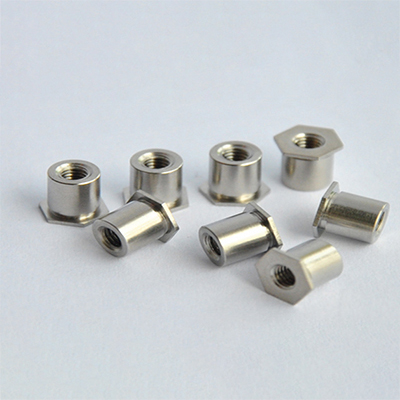In the realm of fastening solutions, Self-Clinching Standoffs have emerged as a viable alternative to traditional fasteners such as nuts and bolts. This article provides A Comparative Analysis of Self-Clinching Standoffs and Traditional Fasteners, examining their differences in installation, fastening effectiveness, and cost-effectiveness.

Installation:
Self-Clinching Standoffs are designed to be permanently installed into metal sheets using a press or punch. The installation process involves inserting the standoff into a pre-drilled hole, then applying sufficient force to deform the clinching feature, securing the standoff in place. In contrast, traditional fasteners like nuts and bolts require additional components such as washers and tools like wrenches or sockets for installation. This often involves more steps and labor compared to the relatively simple installation process of Self-Clinching Standoffs.
Fastening Effectiveness:
One of the key advantages of Self-Clinching Standoffs is their ability to provide a secure and stable fastening solution. Once installed, the clinched feature of the standoff creates a permanent and flush attachment to the metal sheet, ensuring reliable positioning and load-bearing capacity. Traditional fasteners, while effective, may require periodic maintenance and tightening to prevent loosening over time. Additionally, Self-Clinching Standoffs offer a consistent fastening solution, eliminating the variability associated with torque-sensitive fasteners like bolts.
Cost-Effectiveness:
When considering cost-effectiveness, several factors come into play. While the initial cost of Self-Clinching Standoffs may be higher than that of traditional fasteners, they offer long-term savings in terms of labor and assembly time. The simplified installation process of Self-Clinching Standoffs reduces assembly time and minimizes the need for additional hardware and tools, resulting in overall cost savings. Moreover, the permanent and reliable attachment provided by Self-Clinching Standoffs reduces the risk of rework or product failure, further enhancing cost-effectiveness in the long run.
In conclusion, Self-Clinching Standoffs offer several advantages over traditional fasteners in terms of installation, fastening effectiveness, and cost-effectiveness. Their simplified installation process, reliable fastening performance, and long-term cost savings make them a preferred choice for a wide range of applications in industries such as electronics, aerospace, and automotive. While traditional fasteners remain a viable option in certain scenarios, the benefits offered by Self-Clinching Standoffs position them as a versatile and efficient solution for modern fastening challenges.